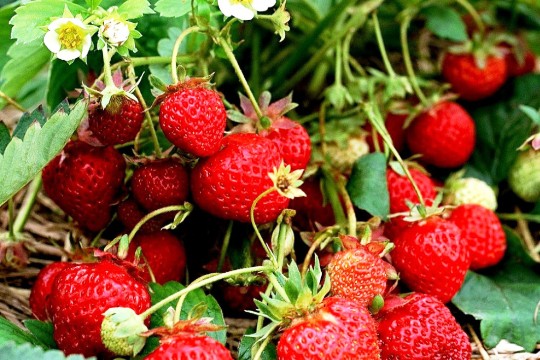Many exotic fruits are being grown in Kashmir adding variety to Kashmir’s fruit basket. Syed Asma reports on some of the ‘new fruits which are surviving and thriving in valley’s climate.

Kashmir valley’s fruit basket is getting more colourful as people are experimenting with fruit plants, which are alien to the valley. Kiwi, olive, persimmon (amlok), hazelnut, strawberry, Chestnut and pistachio are some of the fruit crops that are getting a space in the kitchen gardens, adding variety and aesthetics of orchards in Kashmir.
Apple, pear, plums, walnut, cherry and apricots have for a long time been the major fruit crops of the valley, however, some ‘new’ fruits are attracting growers’ interest. The ‘new’ fruit production in Kashmir is almost 60 tonnes a year.
Mohammed Abdullah Parray, Area Marketing Manager, horticulture department says, “We do not have separate data for any of the new variety as none of them is produced in bulk. We have a combined data of papaya, pine apple, straw berry, lemon etc. and it is 59 tonnes for last year.”
A variety of red strawberry is the most planted fruit among the new entrants. This fruit is grown in many areas of the valley and some villages have shifted to growing strawberry only.
“Presently, about 300-350 kanals are completely used for growing strawberry. Many villages like Gursoo from Zakura, is totally dedicated to this fruit,” says AK Kachroo, Chief Horticulture Officer in the horticulture department.
Strawberry is rich in Vitamin C, potassium, Iodine and magnesium. It is good for eyes, heart and helps to lower blood pressure.
Kiwi fruit plants are also showing good results and the horticulture department is expecting it to gain popularity among fruit growers. The green fleshed fruit has streaks of black seeds inside with a thin brown outer cover is a fruit native to New Zealand. Kiwi was introduced to the valley some years back and is now started bearing fruit. “It has only been two years that we introduced it in the market, so it will take time but I can say it is picking up,” says Kakroo.
The growing season for Kiwi in valley is October and the fruit comes out in around May. It has a long shelf life. “It can last for about six months, if stored properly. It is presently grown in Harwan, Pattan and many other places but mostly in government owned orchards,” says Kakroo.
Experts believe that it will take some time to get growers to cultivate these plants on a large scale. “Unless these fruits are grown on large scale, production will not increase. The horticulture department has to play its part in convincing the farmer to grow new varieties (of fruits) so that we can have them in market,” says an Associate Professor, department of Pomology, Sher-e-Kashmir University of Agricultural Science and Technology Kashmir (SKUAST-K).
Olive is also finding some space along other fruits in the state. The plant needs dry climate to grow and the experiments with the plant at SKUAST-K were not successful. “We have quite a few plant in our campus (for research purpose) but it is not bearing flowers or fruits, we are still working on it,” says the Assistant Professor.
However, in some parts of the state where the temperature and climate suite the olive plant, it is doing well. “It (olive) is grown in Doda, Ramban and Uri. In Uri it is grown almost in each household because of its religious importance. The olive produce of Doda and Ramban areas is shifted to Jammu’s processing units where oil is extracted,” he added.
For time being the oil as well as the fruit is imported in Kashmir.
Fig has got more to it than a fig leaf. Fig has always been there in Kashmir’s forests and kitchen gardens. A drive for planting of fruits that have ready market saw its decline in the valley.
It is not grown on a major scale and is not available in the market. “It is seen in ample quantity in forests and a few of them are seen in kitchen gardens. Actually people do not realize the nutritional value and importance of these fruits for our good health that is why we were unable to convince farmers to grow it on a commercial scale,” says an agriculture scientist at SKUAST-K.
Persimmon (amlok), experts say, can survive and grow in valley’s climate and temperature. It resembles a tomato and is astringent in taste. There are a couple of trees in the university campus at Shalimar, Srinagar.
Some fruit nuts like pecan nut, chest nut, pistachio and hazelnut are also grow in the valley. Among these pecannut and chestnut are produced in abundance. “We get a good production of pecan nut from Shalimar and Harwan nursery and around 200 trees of chestnuts are grown in Harwan nursery,” says Kakroo.
The ‘new’ fruit crops being planted in the valley are adapting to the temperature, climate conditions and the soil type of the Valley. Experts believe that it would be just a few years when most of these fruits will be grown on commercial scale and locally produced exotic fruits will make it to the fruit stalls in Kashmir.















